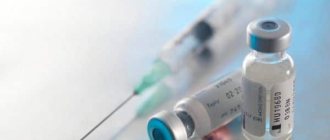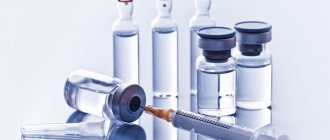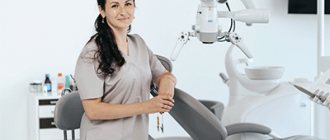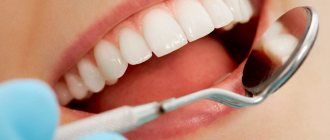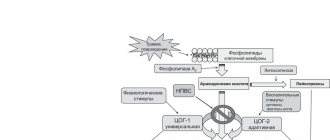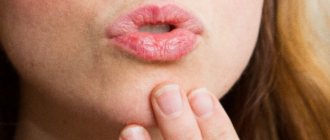Nonsteroidal anti-inflammatory drugs (NSAIDs) are one of the most popular pharmaceutical products. They are prescribed during the treatment of a number of diseases and conditions, often in entire courses. Even with clear instructions from the attending physician, many compatriots have doubts and look for information about drugs on the Internet. And then they come to the pharmacy and ask the pharmacist questions, hoping to justify their guesses or dispel doubts. In this situation, the head manager needs, on the one hand, to help the pharmacy visitor, and on the other hand, not to take on the role of a doctor. It is in this vein that we will cover the topic of topical NSAIDs today - in the form of competent answers to customer questions.
What does “when used correctly” mean? Anointed, and that’s it.
It is advisable to rub in topical forms of NSAIDs for a while rather than just apply them. The analgesic and anti-inflammatory effect of the ointment will be much higher if you do not just “anoint” it, but actively rub the product into the skin over the sore spot for some time. In the course of relevant studies, it was found that even 45 seconds of rubbing diclofenac diethylamine gel five times increased the transdermal delivery of the drug compared to simple application to the skin. And you need to remember that pain-relieving ointments based on NSAIDs act on areas of pain located immediately under the skin. If we talk about joints, then these are the knees, elbows and small joints of the hands. The local form most likely “will not reach the hip joint.” It should be rubbed “around the circumference” of the limb, for example, not only into the dorsum, but also into the palmar surface of the interphalangeal joint [6, 7].
Indications for antibacterial ointments
Liniments with antibacterial action are used in the treatment of inflammatory processes on the skin, such as:
- bacterial skin inflammation;
- various damage to the skin, in which harmful microorganisms multiply;
- ear diseases;
- inflammatory processes in the eyes;
- acne, blackheads;
- eczema;
- diseases in the intimate area.
For wounds
Minor household skin injuries are common. Cuts and abrasions must be promptly treated with disinfecting ointments to avoid the proliferation of pathogenic microorganisms. In this case, the pharmacy will offer you something from the following list:
- Levomekol. This is an antibacterial ointment that destroys pathogenic bacteria and prevents the formation of pus in areas of skin damage. At the same time, the inflammatory process stops.
- Baneocin. Liniment contains 2 antibiotics: neomycin and bacitracin. They destroy pathogenic bacteria and suppress their reproduction.
- Bactroban. This is a broad-spectrum antibacterial ointment. In moderate concentrations, it stops the reproduction of pathogenic flora. At elevated levels, it has a bactericidal effect.
For purulent wounds
Most often, purulent wounds appear due to a decrease in the level of skin protection and infection. Suppuration of wounds occurs in the form of boils and carbuncles.
Ointments used in the treatment of purulent inflammation:
- Fulevil. This is a combined antiseptic that accelerates the restoration of the skin and increases the barrier properties of the skin. Liniment has a drying effect. The medication belongs to the group of chloramphenicol.
- Lincomycin. It belongs to the lincosamide group. The medication has an antimicrobial effect on damaged areas, reduces inflammation and dries the skin.
- Ichthyol. Has bacteriostatic and bactericidal effects. Relieves inflammation not only from the affected area, but also from the surrounding area. The medication actively eliminates purulent inflammation.
- Vishnevsky. Restores the protective functions of the skin, relieves inflammation. Prevents the spread of microbes and has a therapeutic effect faster than many modern analogues.
- Streptocide. Liniment prevents the proliferation of pathogenic microflora, which is the causative agent of purulent infections. The medication also cleanses the skin of toxic substances and inflammatory products.
For wounds with diabetes mellitus
Hyperglycemia often provokes the appearance of cracks and ulcers on the skin. Itching, tightness and redness can also be consequences of diabetes.
List of antibacterial skin ointments used for diabetes:
- Fusicutane. This is an ointment based on a natural antibiotic. Fusidic acid forms the basis of the drug. Its active properties are a disruption of protein synthesis in cells of pathogenic mechanisms. It has the ability to destroy or inhibit the growth of bacteria depending on the concentration.
- Levosin. This is a combination drug. Prevents the proliferation of microbes, relieves inflammation from the damaged area and relieves pain. Methyluracil in the ointment increases local immunity and stimulates skin cell renewal.
- Levomekol. Liniment stimulates the appearance of new cells and contains chloramphenicol, which has a local antibacterial effect. The medication removes excess moisture from the damaged area and destroys pathogenic flora. Levomekol strengthens the barrier properties of the skin due to methyluracil in the composition.
For cracks
If treated incorrectly or too late, cracks in the skin can lead to more serious consequences.
List of medications for the treatment of cracks:
- Relief. Liniment promotes cell restoration and stimulates the healing process. The medicine actively fights pathogenic flora. The ointment is used in complex therapy in the treatment of fissures complicated by hemorrhoids.
- Levomekol. Broad-spectrum liniment, which I use in the treatment of hemorrhoids. The medication contains components that promote tissue regeneration. The antibacterial effect is to destroy purulent bacteria and other harmful microorganisms. The ointment is used in the treatment of deep cracks.
- Syntomycin. Chloramphenicol, which is part of liniment, actively fights bacteria. This helps to avoid re-development of infection in the damaged area and prevent more serious consequences such as paraproctitis.
For pimples and acne
Antibacterial cream is used as a stand-alone product or as part of a set of measures to combat acne and acne on the face.
Antibacterial drugs:
- Syntomycin ointment. The main active ingredient is the antibiotic chloramphenicol. Liniment has a therapeutic effect in the treatment of purulent acne. The antibiotic penetrates into the deep layers of the skin, and castor oil has an anti-inflammatory and regenerating effect.
- Clindamycin cream. The therapeutic effect is achieved through the antibiotic clindamycin. It is used in the fight against fungal diseases, as well as acne on the face.
- Erythromycin ointment. Erythromycin is the active ingredient of the drug. Used in the treatment of chronic acne, purulent pimples. Liniment has an anti-inflammatory effect. At the end of the course of treatment, inflammation in the form of pimples and acne on the skin does not reappear.
- Levomekol. This is a combined drug that has a powerful antimicrobial and restorative effect. Liniment is used in the treatment of purulent pimples and blackheads. The medication is used to restore skin damage after acne.
For papules
Papules arise as one of the reactions to inflammatory processes in the body. Externally they look like nodules on the skin with a diameter of 2 to 8 mm.
Antibacterial ointments for the treatment of subcutaneous acne:
- Tetracycline ointment. This is a drug with a pronounced bactericidal and bacteriostatic effect. The active ingredient is the antibiotic tetracycline. Purulent formations disappear after a course of treatment on days 21-28.
- Levomekol. The drug is often used in the treatment of subcutaneous acne. 2 main components of the ointment: the antibiotic chloramphenicol and methyluracil, which accelerates tissue renewal processes. The combination of substances has a bactericidal and regenerating effect.
- Zinc ointment. The active substance of liniment is zinc, which restores tissue and has antibacterial and anti-inflammatory effects. The drug tightens the pores, which prevents the recurrence of subcutaneous acne.
- Sulfuric ointment. Antibacterial skin ointment actively fights pathogenic bacteria and disinfects the inflamed area. Sulfur penetrates into the deep layers of the epidermis, providing an antimicrobial effect. Liniment dries out the skin. The course should last no more than 21 days.
- Ichthyol ointment. The medicine has a specific smell due to its composition. Has an antiseptic effect and promotes pimple maturation.
For injuries in the mouth
Antibacterial ointments are used when ulcers appear in the mouth. For inflammation, the following liniments are used:
- Metrogil Denta. The drug treats wounds and ulcers in the mouth. The combined drug contains two active substances:
- antibiotic metronidazole;
- chlorhexidine.
In combination, the components have an analgesic and antibacterial effect. The ointment suppresses inflammatory processes. It is used not only during treatment, but also as a prevention of inflammation.
- Levomekol. This ointment is often prescribed for lesions in the mouth. It heals, restores, relieves inflammation and destroys harmful flora.
- Lincomycin. Antibacterial drug from the lincosamide group. The ointment tends to accumulate in the teeth and bones of the oral cavity. This helps prevent the infection from re-spreading.
- Tetracycline ointment. Antibiotic with a broad spectrum of action. Destroys pathogenic microflora.
- Gentamicin. With prolonged use of the ointment, pathogens develop immunity to the components contained in it. Liniment is used as a bactericidal and bacteriostatic drug.
In case of damage to the mucous membrane
Wound and burn injuries, suppuration must be treated with drugs that will have an antimicrobial effect and relieve inflammation. What antibiotic ointments should be used to treat mucous membranes? The list is below.
- Oflomelid. A combination drug that contains 2 active substances:
- ofloxacin;
- methyluracil.
Liniment is used in the treatment of hemorrhoids. The ointment also helps remove pus and dries the treated area. The drug is an antiseptic and prevents the proliferation of pathogens.
- Betadine. The active ingredient is povidone iodine. The drug fights pathogens of viruses, fungal infections, and bacteria. Used on mucous membranes.
During pregnancy and lactation
The use of some antibiotics during pregnancy is acceptable, but only under the strict supervision of a doctor. The periods of the 1st and 2nd trimester are considered the safest. Antibiotics from the macrolide group pose the least danger.
For example, you can use erythromycin ointment. It is used for infectious inflammations of the skin and mucous membranes.
When using antibacterial ointments during lactation, you most often need to avoid breastfeeding. The safest drugs for a child are the macrolide group.
For cracked nipples, you can use ointments that do not require stopping the lactation process:
- Levomycetin ointment. Destroys gram-positive and gram-negative bacteria. Prevents further development of pathogenic flora.
- Syntomycin ointment. This is a broad-spectrum antibiotic. It has a bactericidal and bacteriostatic effect, stopping the development of inflammation.
For children
If the integrity of the skin is damaged, it is recommended to use ointments with an antibacterial effect. They prevent the development of pathogens and are not absorbed into the blood, acting locally. Most drugs are prohibited for children under 12 years of age.
Liniments for streptoderma:
- Levomekol. The drug is used in complex therapy. Liniment increases the barrier functions of the damaged area, accelerates regeneration, and has an anti-inflammatory effect.
- Zinc ointment with chloramphenicol. Zinc is harmful to streptococcus. Liniment has a moisturizing and softening effect. Levomycetin in the composition makes the drug more effective.
For inflammation of the mucous membrane of the eyes:
- Levomycetinic. Chloramphenicol is the main component of the drug. It has a detrimental effect on harmful microflora, destroying its structure and preventing reproduction. Methyluracil in the ointment helps the damaged area to recover.
- Erythromycin. The product does not pose a danger to children from the first months of life. It is used in the treatment of barley, conjunctivitis, etc. Substances contained in liniment enter the tear fluid and cornea, where they produce an antibacterial effect. The drug does not enter the blood.
Which topical NSAID is best?
Everything is individual. If the analgesic effect of oral and injectable forms of NSAIDs can be more or less ranked, then an objective comparative assessment of topical drugs is very difficult. The reason for this is that, along with the actual active substance, the intensity of rubbing, excipients (for example, dimethyl sulfoxide) and the placebo effect play a significant role. Most studies on the effectiveness of topical NSAIDs have focused on diclofenac and ketoprofen. The increased attention to them is due to the fact that diclofenac is the only NSAID whose topical forms are approved by the American Food and Drug Administration (FDA), and ketoprofen, accordingly, is approved in most other countries of the world. Reliable data comparing these two drugs with each other have not yet been published. No one questions the effectiveness of other non-steroidal anti-inflammatory drugs for external use (ibuprofen, phenylbutazone, piroxicam, nimesulide, etc.); each of them was the subject of several clinical trials at one time, but the geography of their use is much more modest and is often limited to a few developing countries [2, 8].
Do excipients in the local form of NSAIDs matter?
Yes, they improve skin permeability and perhaps enhance the therapeutic effect in a certain way. In separate studies, for example, topical formulations of diclofenac with dimethyl sulfoxide (DMSO) and diclofenac diethylamine 1.16% have been shown to penetrate the skin faster than “regular” diclofenac sodium gels. In addition, DMSO itself may have a slight anti-inflammatory effect. There is no solid evidence of an increase in the analgesic effect due to the listed supplements, but their use at least helps to overcome the individual characteristics of the skin [7, 9–11].
Can I take NSAID tablets and use the topical form at the same time?
This is not directly prohibited by the instructions for use, but it is not recommended, and, apparently, does not make sense. According to the only credible study on this topic, there was no significant increase in the analgesic effect when combining local and systemic forms of NSAIDs. At the same time, this use of drugs slightly increased the frequency of rectal bleeding. In clinical trials, oral administration of diclofenac and ibuprofen at doses 2 and 3 times higher than recommended also did not lead to increased pain relief. The effect of a combination of tablets and a topical form of NSAIDs will most likely not be pronounced. At the same time, the likelihood of unwanted reactions slightly increases. Therefore, this combination is not recommended. Usually, if a local remedy does not help, the doctor cancels it and transfers the patient to oral administration [12, 13].
Causes of the disease
Inflammation of the vulva and vagina appears due to the influence of such factors:
- violation of intimate hygiene rules, wearing underwear made of low-quality synthetics
- frequent change of sexual partners without the use of barrier contraception
- diseases of the metabolic system that can affect the vaginal microflora (diabetes mellitus, thyroid problems)
- hormonal imbalances characteristic of puberty and menopause
- taking antibacterial drugs (while taking antibiotics, a fungus like Candida is activated)
- chemotherapy and radiation therapy
- intoxication due to chronic infectious diseases
- mechanical injuries of the vulva and vagina, especially regular ones
The presence of more than two risk factors increases the likelihood of the occurrence of pathology several times.
Allergic vaginitis is also possible. Pathology is diagnosed in the presence of helminths.
Is it possible to use topical NSAIDs for stomach erosions or ulcers?
According to the instructions, it can be done “with caution.” The concentration of the active substance in the blood plasma after the use of topical NSAIDs is less than 10% of that achieved by oral administration. The incidence of adverse reactions from the gastrointestinal tract when using local forms of NSAIDs does not differ from that when rubbing placebo and is significantly lower than when using systemic agents. However, just in case, these drugs are not recommended to be applied to the skin during gastrointestinal bleeding and exacerbation of gastric or duodenal ulcers [5, 14].
Contraindications
Before using antibacterial ointment, you need to know what contraindications there may be. Each drug has a different list, but there are some common points:
- allergic reaction to one or more components of the drug;
- oncological diseases;
- lupus;
- early age of children up to 12-24 months;
- tissue death in the area of application;
- during pregnancy and lactation. You should definitely consult your doctor.
How many times a day and for how long can you apply such drugs?
Typically three to four times a day for two weeks. Topical NSAIDs act quite quickly - the effect occurs within an hour - and help control acute somatic pain of moderate intensity. They cope worse with chronic pain. If there is no effect within two weeks of proper use, you should consult a doctor. There is a chance that he will recommend switching to oral forms or another group of drugs.
Sources
- Derry S, Conaghan P, Da Silva JA, et al. Topical NSAIDs for chronic musculoskeletal pain in adults. Cochrane Database Syst Rev. 2016; 4: CD007400. https://www.cochranelibrary.com/cdsr/doi/10.1002/14651858.CD007400.pub3/full
- Derry S, Wiffen PJ, Kalso EA, et al. Topical analgesics for acute and chronic pain in adults – an overview of Cochrane Reviews. Cochrane Database Syst Rev. 2017; 5: CD008609. https://www.cochranelibrary.com/cdsr/doi/10.1002/14651858.CD008609.pub2/full
- Klinge SA, Sawyer GA. Effectiveness and safety of topical versus oral nonsteroidal anti-inflammatory drugs: a comprehensive review. Phys Sportsmed. May 2013; 41(2): 64–74. https://www.ncbi.nlm.nih.gov/pubmed/23703519
- Kloppenburg M, Kroon FP, Blanco FJ, et al. 2022 update of the EULAR recommendations for the management of hand osteoarthritis Annals of the Rheumatic Diseases 2019; 78: 16–24. https://ard.bmj.com/content/78/1/16
- Honvo G, Leclercq V, Geerinck A, et al. Safety of Topical Non-steroidal Anti-Inflammatory Drugs in Osteoarthritis: Outcomes of a Systematic Review and Meta-Analysis. Drugs Aging. 2019; 36(Suppl 1): 45–64. https://www.ncbi.nlm.nih.gov/pmc/articles/PMC6509095/
- Hasler-Nguyen N, Fotopoulos G. Effect of rubbing on the in vitro skin permeation of diclofenac-diethylamine 1.16% gel. BMC Res Notes. 2012 Jun 21; 5: 321. https://www.ncbi.nlm.nih.gov/pmc/articles/PMC3424122/
- Hagen M, Baker M. Skin penetration and tissue permeation after topical administration of diclofenac. Curr Med Res Opin. 2022 Sep; 33(9):1623–1634. https://www.tandfonline.com/doi/full/10.1080/03007995.2017.1352497
- Rafanan BS Jr, Valdecañas BF, Lim BP, et al. Consensus recommendations for managing osteoarthritic pain with topical NSAIDs in Asia-Pacific. Pain Manag. 2018; 8 (2): 115–128. https://www.futuremedicine.com/doi/10.2217/pmt-2017-0047?url_ver=Z39.88-2003&rfr_id=ori:rid:…
- Pradal J, Vallet CM, Frappin G, Bariguian F, Lombardi MS. Importance of the formulation in the skin delivery of topical diclofenac: not all topical diclofenac formulations are the same. J Pain Res. 2019; 12: 1149–1154. https://www.dovepress.com/importance-of-the-formulation-in-the-skin-delivery-of-topical-diclofen-pee…
- Galer BS. A comparative subjective assessment study of PENNSAID® and Voltaren Gel®, two topical formulations of diclofenac sodium. Pain Pract. 2011; 11 (3): 252–60. https://onlinelibrary.wiley.com/doi/abs/10.1111/j.1533-2500.2010.00420.x
- Tieppo Francio V, Davani S, Towery C, Brown TL. Oral Versus Topical Diclofenac Sodium in the Treatment of Osteoarthritis. J Pain Palliat Care Pharmacother. 2022 Jun; 31 (2): 113–120. https://www.tandfonline.com/doi/abs/10.1080/15360288.2017.1301616?journalCode=ippc20
- Simon LS, Grierson LM, Naseer Z, et al. Efficacy and safety of topical diclofenac containing dimethyl sulfoxide (DMSO) compared with those of topical placebo, DMSO vehicle and oral diclofenac for knee osteoarthritis. Pain. 2009; 143(3):238–45. https://insights.ovid.com/article/00006396-200906000-00016
- Van Amburgh J. Can Topical and Oral NSAIDs Be Combined for Pain Relief? Medscape. https://www.medscape.com/viewarticle/861740
- Roth SH. Nonsteroidal anti-inflammatory drug gastropathy: new avenues for safety. Clin Interv Aging. 2011; 6: 125–31. https://www.ncbi.nlm.nih.gov/pmc/articles/PMC3131982/
- Kowalski ML, Makowska JS, Blanca M, et al. Hypersensitivity to nonsteroidal anti-inflammatory drugs (NSAIDs) – classification, diagnosis and management: review of the EAACI/ENDA and GA2LEN/HANNA. Allergy 2011; 66:818–829. https://www.eaaci.org/attachments/668_Kowalski%20Hypersensitivity%20to%20nonsteroidal%20anti-inflamm…
- Rogers NV, Rowland K. An alternative to oral NSAIDs for acute musculoskeletal injuries. J Fam Pract. Mar 2011; 60 (3): 147–8. https://www.ncbi.nlm.nih.gov/pmc/articles/PMC3183960/
Mode of application
Methods of using antibacterial liniments depend on the specific drug and the inflammatory process. The process is described in the instructions.
Basically, ointments are applied as follows:
- For burn and wound injuries, ointments are applied in a layer 1-2 mm thick. The procedure is repeated 1-3 times during the day. The course of treatment is 7 days;
- for inflammation of the mucous membranes of the eye, liniment is placed under both eyelids no more than 3 times a day. The course ranges from 3 days to a week. In case of complications, it can be extended to 2 weeks;
- for skin inflammations, liniments are used up to three times a day for no longer than one week;
- for dermatological diseases, the drugs are used 2 times a day, for up to 7 days. Ointments are applied in a thin layer or pointwise.


